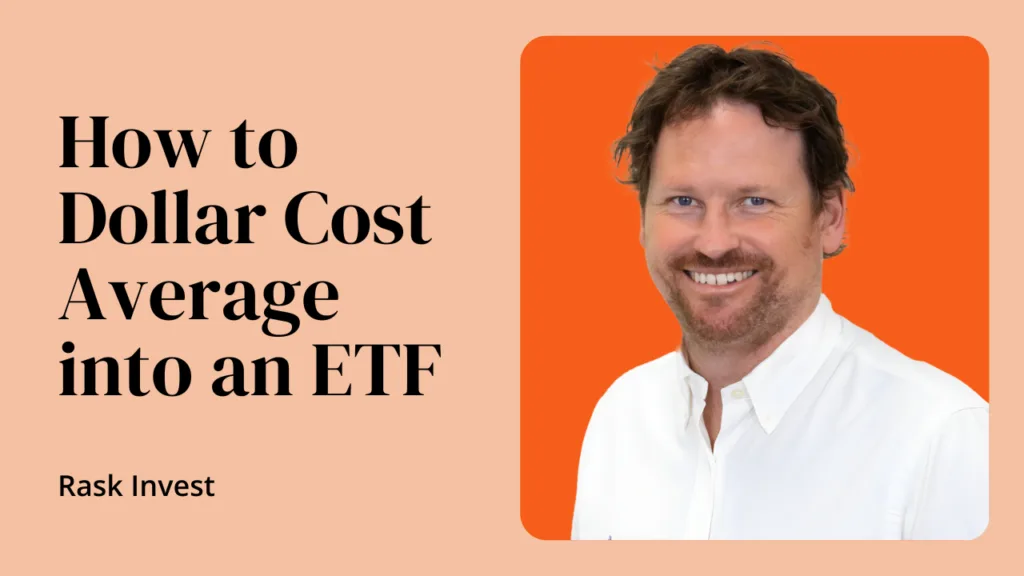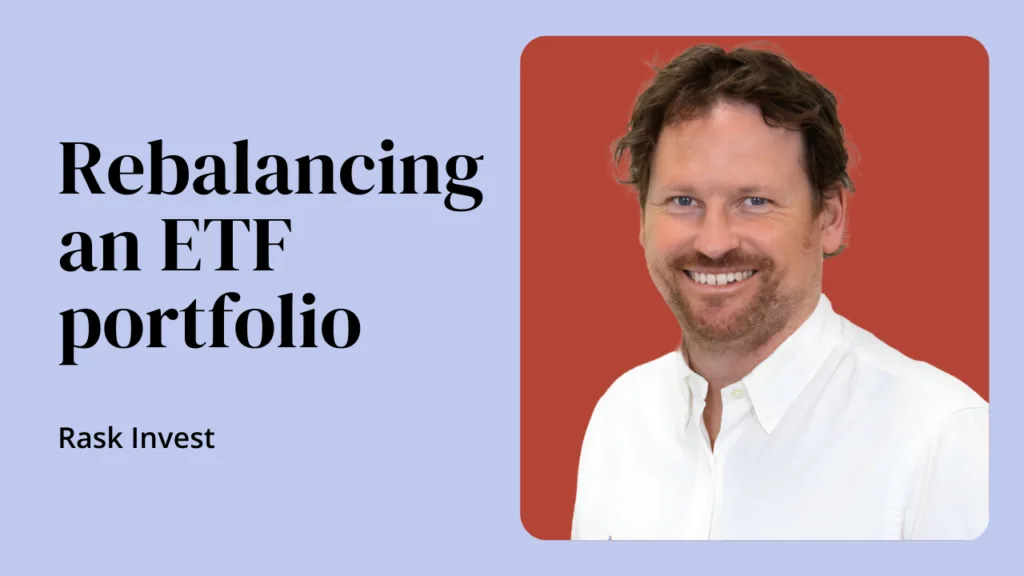Dollar-cost averaging (DCA) into a portfolio of ETFs over the long-term is a fantastic way to grow your wealth. Instead of trying to time the market, you invest at set intervals, reducing the impact of short-term price fluctuations. Done over decades it creates a powerful snowball of compounding wealth. That’s what we’re all here for!
At Rask Invest, we encourage investors to continue saving and making regular contributions to their investment accounts, regardless of market conditions. Reaching that savings goal of $10,000 or $20,000 to get going, your ongoing contributions will be the main driver of long-term growth.
This 4-step guide will cover:
- What is dollar cost averaging into an ETF portfolio and why does it work?
- How to set up regular contributions in your Rask Invest account
- Smart strategies to optimise your ETF investments
- How to time contributions to minimise brokerage fees
Step 1: Understanding dollar-cost averaging (DCA)
What is DCA?
Dollar-cost averaging means investing a fixed amount of money at regular intervals, regardless of market prices.
Why does dollar cost averaging strategy work?
- Reduces market timing risk – No need to guess the “perfect” time to buy
- Smooths out price fluctuations – Buying at different prices averages your cost per unit
- Builds long-term discipline – Encourages consistent investing
Example: Investing $1,000 per month in a DCA strategy
| Month | ETF Price | Shares Purchased |
|---|---|---|
| January | $50 | 20 |
| February | $40 | 25 |
| March | $45 | 22.2 |
| April | $55 | 18.2 |
| Total Invested | $4,000 | 85.4 shares |
| Average Price Paid | $46.81 |
By investing regularly, you buy fewer units of the ETF in high months and buy more when prices are low, lowering your overall cost per share. Also…I know, but for this example let’s just pretend you can buy a fraction of a unit!
Step 2: How to dollar cost average to your Rask Invest account
At Rask Invest, there are two ways to contribute funds:
- One-off transfers via BPAY
- Click on “Add Funds” in your account. Retrieve your BPAY biller code and reference number. Make a transfer from your bank account anytime
- Your BPAY details remain active for life, making it easy to transfer funds anytime
- You have full control—deposit funds at your own pace
- Setting up an automated savings plan
For a hands-free approach, you can turn on automatic contributions in your Rask Invest account.- Choose your contribution amount (minimum $100, maximum $6,000)
- Funds are debited on the 15th of each month (or the next business day)
- Helps you stay consistent with your investing
- Set up a recurring BPAY
- Via your online banking, select BPAY as the payment option and choose “recurring payment”
- Set this payment for any schedule that suits you; weekly, fortnightly, monthly, quarterly, biannual or annually.
| Option | Minimum Contribution | Maximum Contribution | Frequency |
|---|---|---|---|
| BPAY (Manual Transfer) | No minimum | No maximum | Anytime |
| Automatic Contributions | $100 | $6,000 | Monthly (15th) |
| Recurring BPAY | No minimum | No maximum | Customised to suit you |
Step 3: Optimising your dollar cost averaging to reduce brokerage fees
At Rask Invest, ETF purchases incur brokerage fees of $4.40 or 0.044% per trade. While this is a small cost, savvy investors can optimise their contributions to get the most out of their transactions.
Efficient strategy: Sync your contributions with ETF distributions
Every quarter, ETFs pay cash distributions into your Rask Invest account. By timing your contributions to occur just after these payments, we can combine your deposit with ETF distributions, making fewer, larger trades and reducing brokerage costs.
Do we take our dividends as cash or use dividend reinvestment plans?
It is important to note here, at Rask Invest we choose to receive the distributions paid by the ETFs as cash rather than use a DRP. Why? Because we want to control where that cash goes. It doesn’t always go back into the same ETF. It’s about keeping the right balance.
| Quarter | Contribution Timing |
|---|---|
| July | After the 25th |
| October | After the 25th |
| January | After the 25th |
| April | After the 25th |
How to set this up:
- Check your ETF distribution schedule (Rask Invest will notify you).
- Set up a BPAY recurring transfer for the week after the 25th of these months.
- Your ETF distributions and your contribution will be invested together, making larger, more cost-effective trades.
Result: Fewer trades, lower fees, and more money invested.
Step 4: Choosing the best contribution frequency for you
There is no right or wrong way to contribute—it depends on your personal savings habits. Here are some common approaches our investors take:
| Investor Type | Contribution Style | Best Method |
|---|---|---|
| Budget Planner | Weekly or fortnightly transfers | BPAY recurring payments |
| Set & Forget Investor | Monthly contributions | Automatic direct debit (15th of the month) |
| Efficiency Seeker | Quarterly lump sums (post-ETF distributions) | BPAY transfers after the 25th |
| Flexible Investor | Contribute when cash is available | Manual BPAY transfers |
Key takeaway: The best method is the one that works for you. Whether you invest weekly, monthly, or quarterly, staying consistent is the most important thing.
Key takeaways
- Dollar-cost averaging (DCA) reduces market timing risks and builds wealth over time
- Rask Invest offers BPAY and automated contributions for easy investing
- People seeking the most efficiency time their contributions after ETF distributions to lower trading costs
- Choose a savings plan that fits your lifestyle—whether it’s weekly, monthly, or quarterly
Final thoughts
At Rask Invest, we believe that investing should be simple, efficient, and stress-free. Whether you set up a regular savings plan or contribute whenever it suits you, the key is to stay invested and let compounding work in your favour.
If you need a hand thinking about how to invest for the long term, you can view our portfolios, read our investment manual, or book a call with me to discuss your options. Finally, I encourage you to jump into our Community. It’s a great place to chat with like-minded investors. You’ll find Owen and me there too.


